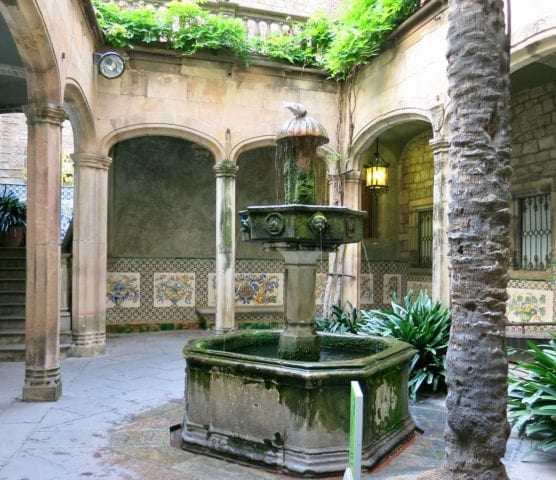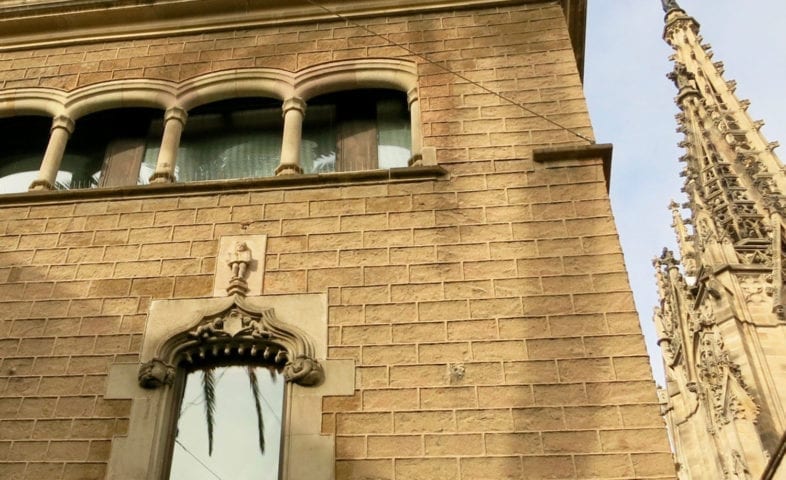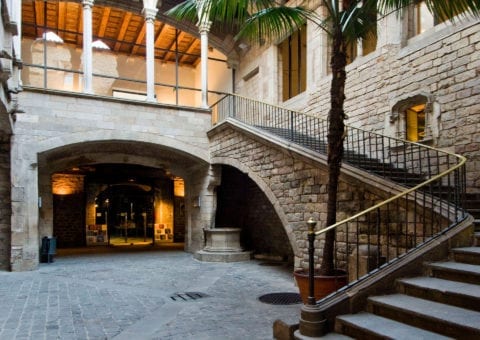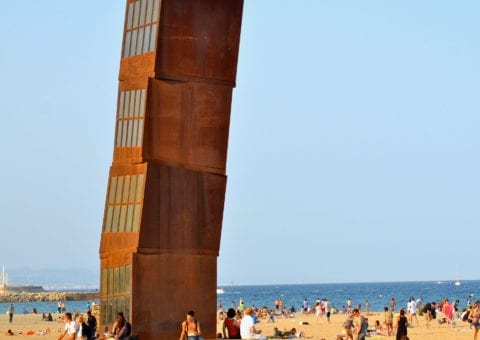It was built on the Roman walls in the 12th century as a residence to house the archdeacons.
Archdeacon or Archdeacon; he is the superior of the deacons and the head of the cathedral of Barcelona, from his administration to dispatching with the bishop.
The cloister-like patio is remarkable, which centers a Gothic fountain.
In the 16th century, an important reform was made with the structure of a Gothic Mansion.
In the 19th century the building was disentailed, passing into the hands of a bourgeois family.
Disentailed: The confiscation of Mendizabal carried out between the 18th and 19th centuries, by which Church property was expropriated that could not be sold or transferred by going to public auction.
Headquarters of the Bar Association from 1895 to 1925. As a result of the acquisition, the renovation works were entrusted to the architect Lluís Domenech i Montaner, who gave different modernist touches to the building. One of them is the controversial mailbox at the entrance, sculpted in white marble by Alfons Juyo. It caused a lot of controversy among the lawyers of the time due to its symbolism and relationship with justice; five swallows, a tortoise, 7 ivy leaves and the coat of arms of the Barcelona Bar Association.
Interpretation:
Swallows: How High Justice Flies
The ivy: The bureaucracy of justice and its convoluted process
The Turtle: The slowness of justice
It is curious to see some tourists, mainly Asians, as they caress the turtle, because it will bring them luck. I guess it’s because of the symbolism that the turtle has in many Eastern traditions.
China: Wisdom and longevity
In 1920 it became the property of the City Council and in 1921 the Historical Archive of the City was located.
In 1970 the Casa de l’Ardiaca was remodeled to join it to the Casa del Degá, the result of this reform was the current appearance of the central courtyard.
Did you know?
…On June 4, the festival of “Corpus Christi”, the Gothic fountain in the courtyard wears its best clothes to make an egg dance on its water jet, it is… “L’Ou com balla”. This tradition dates back to 1637 and began in the Cathedral of Barcelona, today we can see it in different churches in the city.









